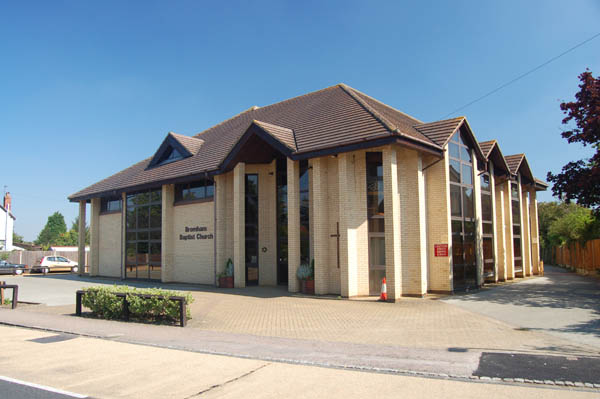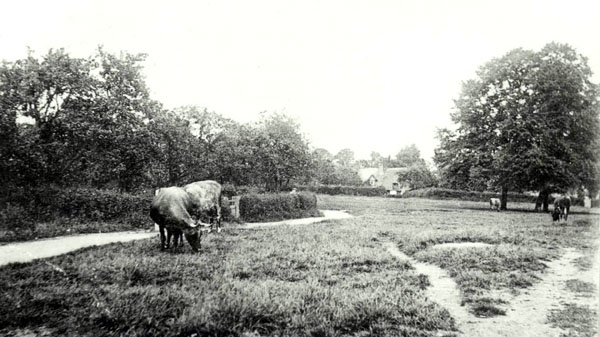Nonconformity in Bromham

Bromham Baptist Church Aug 2007
Early History
In 1672 Charles II issued a Declaration of Toleration for Protestants dissenting from the Church of England; this had the effect of some dissenting meeting houses registering with the Secretary of State. The Toleration Act of 1689 enshrined the right of protestants to dissent from the Church of England and, once again, encouraged meeting houses to register voluntarily with local quarter sessions and Anglican church. Registration provided protection against persecution, laying a duty of protection upon magistrates and so was popular with nonconformists. Most registrations were made with quarter sessions until the middle of the 18th century, presumably due to the mutual antagonism of nonconformists and established Church. However, from that point registration with the Church, via the local archdeaconry began to become the favoured method, because the archdeaconry Registrar would issue a licence at any time rather than during the days each quarter when the quarter sessions met.
Bedfordshire & Luton Archives & Records Service has a reasonable number of registrations of nonconformist meeting houses in both the Quarter Sessions and Archdeaconry of Bedford archives. Registration continued through the 19th century even though persecution faded away - this was because registered buildings were allowed to claim exemption from parish poor rates, were exempt from control by the Charity Commission and were allowed to be licensed to carry out marriages. These things meant that registration became almost compulsory in practice for well established nonconformist meetings. This is fortunate for the local historian because sometimes the only surviving references to a nonconformist meeting occur as registrations. One drawback with the registrations are that they do not usually inform the reader of the particular type of denomination involved, though sometimes it is possible to infer it from other evidence. Bedfordshire & Luton Archives & Records Service has one registration relating to Bromham: the house of Samuel Hall was registered by Thomas Middleditch in 1832 [ABN1/2 and ABN3/3, 122].

Bromham Green about 1900 [Z50/21/14]
Wesleyan Methodists
The first mention of Wesleyan Methodism in Bromham comes in 1817 with the first steward's accounts for the Bedford Circuit lodged with Bedfordshire & Luton Archives & Records Service [MB12]. Given that there were Methodists in the parish it seems a fair guess that Samuel Hall's house registered for worship in 1832 might have been a Wesleyan meeting. In 1889 John Maydew Wambley of Bedford, Wesleyan Methodist minister, registered a building in occupation of a man named Odell, this registration was cancelled in 1925. There was never a Wesleyan chapel in Bromham, a bakery north of The Green being used for meetings until 1911 when enthusiasm in the village seems to have waned, just as the Baptists were beginning to grow in numbers.
Baptists
Bromham Baptist church is surprisingly large for a village. The current building is modern, but so is the strength of Baptist worship. There are no records registering a building for Baptist use held by Bedfordshire & Luton Archives & Records Service, suggesting that the denomination did not begin to gather strength until after voluntary registration ceased in 1901. The first building erected for Baptist worship was a timber-framed prefabricated structure opened in 1924 on a site purchased by Julius Rideout. This structure remained until 1991 but was effectively replaced by a new purpose built chapel on the same site in 1966, designed by Bedford architects Deacon & Laing. In 1991 the present church was built around the 1966 structure and the 1924 building taken down and reused in another parish.